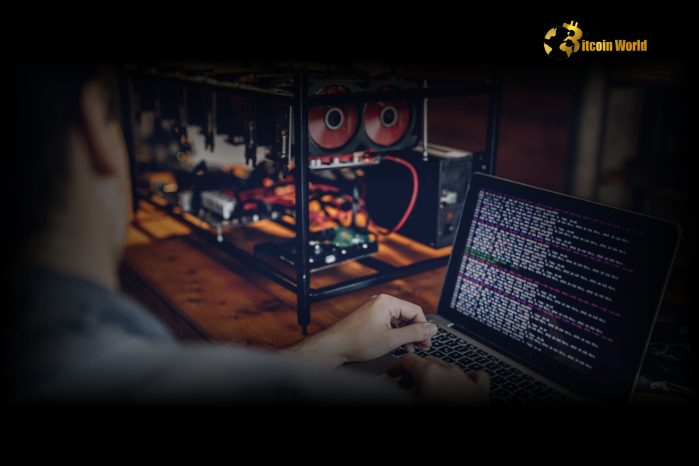
How Does Bitcoin Mining Work? A Guide to Understanding the Process
Bitcoin mining is the process by which new Bitcoins are created and transactions are verified on the Bitcoin network. This process is essential to maintaining Bitcoin’s decentralized nature and security. By solving complex mathematical problems, miners verify transaction blocks and add them to Bitcoin’s public ledger, the blockchain. In return, they earn Bitcoin rewards, which incentivizes them to continue supporting the network.
Let’s break down how Bitcoin mining works and why it’s crucial to Bitcoin’s ecosystem.
1. The Basics of Bitcoin Mining
Bitcoin mining involves using computational power to solve cryptographic puzzles that secure transactions and maintain the blockchain. Here’s a high-level overview of the process:
- Transaction Validation: Miners gather transactions into blocks and verify that each transaction follows Bitcoin’s rules, such as sufficient funds and valid digital signatures.
- Block Formation: Once verified, these transactions are grouped into a block.
- Solving the Puzzle: Miners compete to solve a complex mathematical puzzle associated with each block. This requires computational effort and is known as proof of work.
The miner who solves the puzzle first earns the right to add the block to the blockchain and is rewarded with newly minted Bitcoin.
2. Proof of Work and Mining Difficulty
Bitcoin mining relies on a concept called proof of work (PoW), which ensures that adding blocks to the blockchain requires computational effort, making the network secure from attacks. Proof of work involves solving a cryptographic puzzle, and the difficulty of this puzzle adjusts automatically every 2,016 blocks (approximately every two weeks) to maintain a consistent rate of block creation.
- Mining Difficulty: As more miners join the network, the difficulty increases, requiring more computational power. Conversely, if miners leave, the difficulty decreases.
- Hash Rate: The network’s total computational power, or hash rate, influences how competitive mining is. A higher hash rate means more security for the network.
The difficulty adjustment and proof-of-work system ensure that blocks are added roughly every 10 minutes, maintaining Bitcoin’s predictable supply rate.
3. The Role of Mining Hardware
Mining Bitcoin requires specialized hardware known as ASICs (Application-Specific Integrated Circuits). These devices are designed specifically for Bitcoin mining and are much more efficient than regular computers or even GPUs (Graphics Processing Units) at solving the proof-of-work puzzles.
- ASIC Miners: Machines like the Antminer series are designed solely for Bitcoin mining, delivering high hash rates while consuming less power.
- Energy Consumption: Mining is energy-intensive, especially as the difficulty increases. Miners must balance profitability with electricity costs to make mining viable.
ASIC miners have made it difficult for casual or hobbyist miners to compete, leading to the rise of large mining farms and mining pools.
4. Mining Rewards and Bitcoin Halving
Mining rewards incentivize miners to secure the network, but Bitcoin’s fixed supply of 21 million BTC introduces scarcity. The rewards for mining a new block reduce over time through a process called halving:
- Block Reward: Initially, miners earned 50 BTC per block. This reward halves approximately every four years (every 210,000 blocks).
- Bitcoin Halving: The latest halving in April 2024 reduced the reward to 3.125 BTC per block. This reduction continues until all 21 million BTC are mined, expected around 2140.
Bitcoin halving creates a supply shock, reducing the rate at which new BTC enters circulation, which has historically contributed to Bitcoin’s price appreciation.
5. How Transactions Are Added to the Blockchain
When a miner successfully solves the puzzle, they broadcast the newly validated block to the Bitcoin network:
- Block Verification: Other miners verify the new block’s validity, ensuring that all transactions are correct and the proof of work is valid.
- Adding to the Blockchain: Once verified, the block is added to the blockchain, forming a permanent and immutable record of transactions.
- Reward Distribution: The winning miner receives the block reward and transaction fees from all transactions within the block.
This process of verification and reward distribution incentivizes miners to maintain the integrity of the blockchain.
6. Mining Pools and Solo Mining
Due to the high computational power required, individual mining has become less profitable, leading to the popularity of mining pools:
- Mining Pools: In a pool, miners combine their resources to increase the chances of solving the puzzle and share the rewards based on each miner’s contribution.
- Solo Mining: Solo miners operate independently, but unless they have significant computational power, their chances of solving a block are lower.
Mining pools offer more consistent payouts, making them popular among miners looking for steady income.
7. Environmental Concerns of Bitcoin Mining
Bitcoin mining’s energy consumption has raised environmental concerns, as mining operations require substantial power:
- Renewable Energy: Many miners are transitioning to renewable energy sources to reduce environmental impact, especially in regions where electricity costs are lower.
- Efforts to Improve Efficiency: Innovations in mining technology and energy-efficient ASICs aim to minimize power usage while maintaining the network’s security.
Environmental concerns have led to ongoing debates, with some countries enacting policies to regulate or limit mining operations.
Conclusion
Bitcoin mining is a vital process that validates transactions, secures the blockchain, and introduces new BTC into circulation. Through a system of proof of work, mining rewards, and halvings, Bitcoin maintains its decentralized and secure structure, making it resilient to attacks and inflation. However, mining’s energy demands and reliance on specialized hardware make it a challenging and competitive field.
Whether you’re interested in how Bitcoin transactions are secured or considering mining yourself, understanding the fundamentals of Bitcoin mining is essential to appreciating the robustness of the Bitcoin network.
For more information on Bitcoin’s network security and mining profitability, read our article on how mining difficulty and rewards affect Bitcoin’s price.















